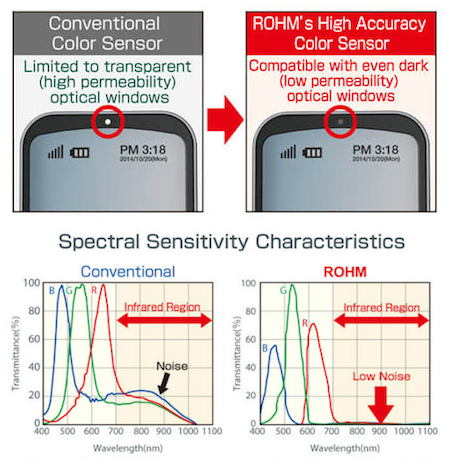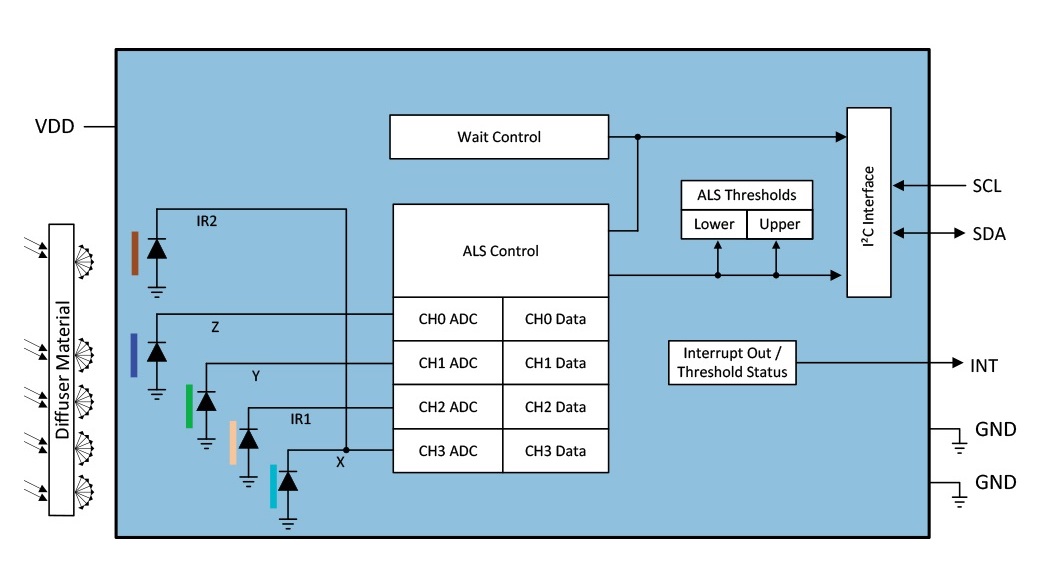A new breed of color sensors is taking integration to a new level with more robust white color balancing capabilities and display management features.
The next-generation color sensors in consumer devices like smartphones and tablets are offering high-quality display calibration in order to facilitate color balancing and vivid images with almost zero color distortion from the camera.
Smartphones, tablets and other consumer devices with a display have been increasingly incorporating color sensors to analyze the RGB components of ambient light and adjust the image on display accordingly.
The top smartphone vendors—Apple and Samsung—pioneered the shift from ambient light sensors (ALS) to red, green, blue (RGB) sensors a few years ago. The ALS devices measure the intensity of light surrounding a smartphone or tablet. And RGB sensors measure a room’s color temperature via red, green and blue wavelengths and help correct white balance in the device display.
The RGB color sensors also perform backlight dimming according to the surrounding brightness levels. However, these color sensors use a transparent optical window to detect visible or RGB light accurately.
On the other hand, smartphones and other portable devices prefer to use the dark optical window to optimize sensitivity and transmissivity. But it’s difficult to precisely detect colors with the dark optical window because less visible light gets through and the light that does permeate gets mixed in with infrared (IR) rays.
So color sensors cannot provide accurate detection due to the effects of infrared interference when dark windows are used. ROHM Semiconductor claims it has a solution. Its new color sensor employs an infrared removal technology while supporting the dark optical window.

The BH1747NUC color sensor is capable of detecting the color temperature, brightness, and RGB components of ambient light. The sensor for display-equipped devices like smartphones and tablets claims to have reduced the effects of infrared rays by over 10x compared to other color sensors available in the market.
RGB plus Ambient Light Sensor
Another notable development in the makeover of color sensor design comes from ams. Its TCS3430 color sensor adapts the display color and brightness towards warm or cool white based on the correlated color temperature (CCT) level of the environment.

The TCS3430 color sensor fabricates interferometric optical filters directly on the wafer to create five channels: X, Y and Z channels and two infrared channels. The IR channels are used for light source detection while the Y channel’s response to the green portion of the visible light spectrum provides a measure of illuminance.
And that enables the TCS3430 sensor IC to operate as an ambient light sensor as well as a color sensor. It comes in a small footprint of 2.41 mm x 1.75 mm x 1.00 mm, and that makes it suitable for consumer devices such as smartphones, tablets, and notebooks.
Article Source: www.allaboutcircuits.com






